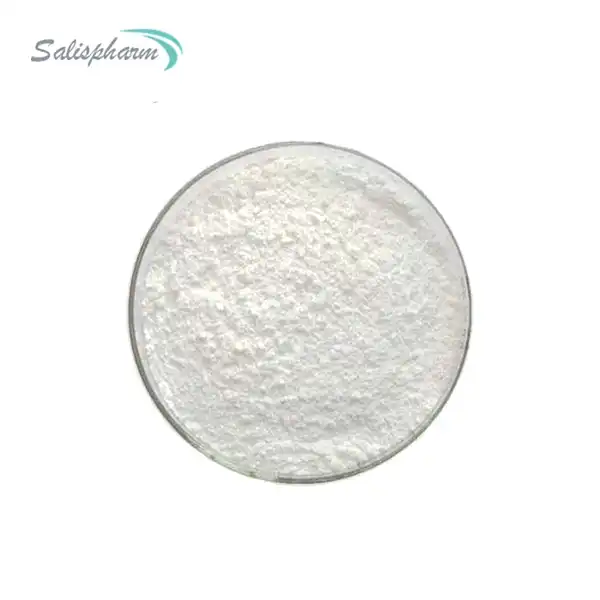Fluconazole is an antifungal medication commonly prescribed to treat various fungal infections, including candidiasis, cryptococcosis, and other mycoses. When taken, this medication can have significant effects on the human body, both intended and potentially unintended. In this blog post, we will explore the key ways in which fluconazole can impact your bodily functions and overall health.
What Happens to Your Body When You Take Fluconazole?
When fluconazole is taken, it is rapidly absorbed into the bloodstream, where it can then distribute throughout the body and reach the site of the fungal infection. Once in the body, fluconazole works by interfering with the synthesis of ergosterol, a critical component of the fungal cell membrane. This disruption of the cell membrane ultimately leads to the death or inhibition of the target fungal cells.
The specific effects of Fluconazole Powder on the body can vary depending on factors such as the dosage, duration of treatment, and the individual's response to the medication. However, some of the most common bodily effects of fluconazole include:
1. Gastrointestinal effects: Fluconazole can cause gastrointestinal side effects, such as nausea, vomiting, diarrhea, and abdominal pain. These effects are typically mild and tend to subside as the body adjusts to the medication.
2. Liver function changes: As mentioned earlier, fluconazole can potentially impact liver function. In some cases, the medication may cause a temporary increase in liver enzyme levels, which is typically monitored through regular blood tests.
3. Allergic reactions: Although relatively uncommon, some individuals may experience allergic reactions to fluconazole, such as skin rashes, hives, or difficulty breathing. These reactions may require immediate medical attention.
4. Neurological effects: In rare cases, fluconazole has been associated with neurological side effects, such as headaches, dizziness, or changes in mood or behavior.
5. Cardiovascular effects: There have been reports of fluconazole potentially affecting heart rhythm, particularly in individuals with certain pre-existing heart conditions or who are taking other medications that can interact with the heart.
It is important to note that the specific effects of Fluconazole Powder on the body can vary from person to person, and it is essential to follow the instructions and guidance provided by your healthcare provider to ensure the safe and effective use of this medication.
What Are the Possible Interactions Between Fluconazole and Other Medications?
When an individual stops taking fluconazole, the drug will gradually be cleared from the body, and the effects on the body will typically subside. The timeline for this process can vary depending on factors such as the duration of treatment, the dosage, and the individual's metabolism.
In general, the following may occur when an individual stops taking fluconazole:
1. Symptom resolution: If the fluconazole was prescribed to treat a fungal infection, the symptoms of the infection may start to resolve as the drug's antifungal effects wear off.
2. Liver function normalization: If fluconazole had caused any changes in liver enzyme levels, these levels should return to normal as the drug is cleared from the body.
3. Allergy or side effect resolution: Any allergic reactions or other side effects experienced during the course of fluconazole treatment should subside as the drug is eliminated.
4. Potential return of the fungal infection: In some cases, if the fungal infection was not fully eradicated, it may start to recur once the fluconazole is no longer present to inhibit the fungal growth.
It is important to note that the process of stopping Fluconazole Powder should be done under the guidance of a healthcare provider, as abruptly discontinuing the medication may lead to the reemergence of the fungal infection or other potential complications. Gradual tapering of the medication may be recommended in some cases to ensure a smooth transition off the drug.
If you are also interested in this product and want to know more product details, or want to know about other related products, please feel free to contact iceyqiang@aliyun.com.
References:
1. Pappas, P. G., Kauffman, C. A., Andes, D. R., Clancy, C. J., Marr, K. A., Ostrosky-Zeichner, L., ... & Sobel, J. D. (2016). Clinical practice guideline for the management of candidiasis: 2016 update by the Infectious Diseases Society of America. Clinical infectious diseases, 62(4), e1-e50.
2. Sheppard, D. C., & Lastovetsky, O. (2019). Fluconazole: a review of its spectrum of activity, pharmacokinetics, and clinical application. Expert review of anti-infective therapy, 17(12), 951-964.
3. Mistry, N., Shapiro, L., Roper, N., & Kulkarni, R. (2019). Fluconazole: a review of its spectrum of activity, pharmacokinetics, and drug interactions. The Journal of the American Osteopathic Association, 119(9), 619-629.
4. Kullberg, B. J., & Arendrup, M. C. (2015). Invasive candidiasis. New England Journal of Medicine, 373(15), 1445-1456.
5. Andes, D. R., Safdar, N., Baddley, J. W., Playford, G., Reboli, A. C., Rex, J. H., ... & Pappas, P. G. (2012). Impact of treatment strategy on outcomes in patients with candidemia and other forms of invasive candidiasis: a patient-level quantitative review of randomized trials. Clinical Infectious Diseases, 54(8), 1110-1122.
6. Pfaller, M. A., & Diekema, D. J. (2007). Epidemiology of invasive candidiasis: a persistent public health problem. Clinical Microbiology Reviews, 20(1), 133-163.
7. Ferrer, O., Soriano, A., Riera, M., Montero, M., Akova, M., & Ariza, J. (2016). Fluconazole monotherapy is as effective as fluconazole plus amphotericin B for candidemia in non-neutropenic patients. European Journal of Clinical Microbiology & Infectious Diseases, 35(5), 809-816.
8. Steinbach, W. J., Roilides, E., Berman, D., Carey, T., Zaoutis, T. E., Shetty, A. K., ... & Palazzi, D. L. (2012). Results from a prospective, international, epidemiologic study of invasive candidiasis in children and neonates. The Pediatric Infectious Disease Journal, 31(12), 1252-1257.
9. Pappas, P. G., Lionakis, M. S., Arendrup, M. C., Ostrosky-Zeichner, L., & Kullberg, B. J. (2018). Invasive candidiasis. Nature reviews Disease primers, 4(1), 1-20.
10. Thompson, G. R., & Patel, P. K. (2020). Fluconazole: a review of its clinical uses and mechanisms of action. Clinical Therapeutics, 42(5), 798-816.









